Bed bug infestations have been on the rise throughout Toronto. These persistent pests can be challenging to detect and even harder to eliminate without the right approach.
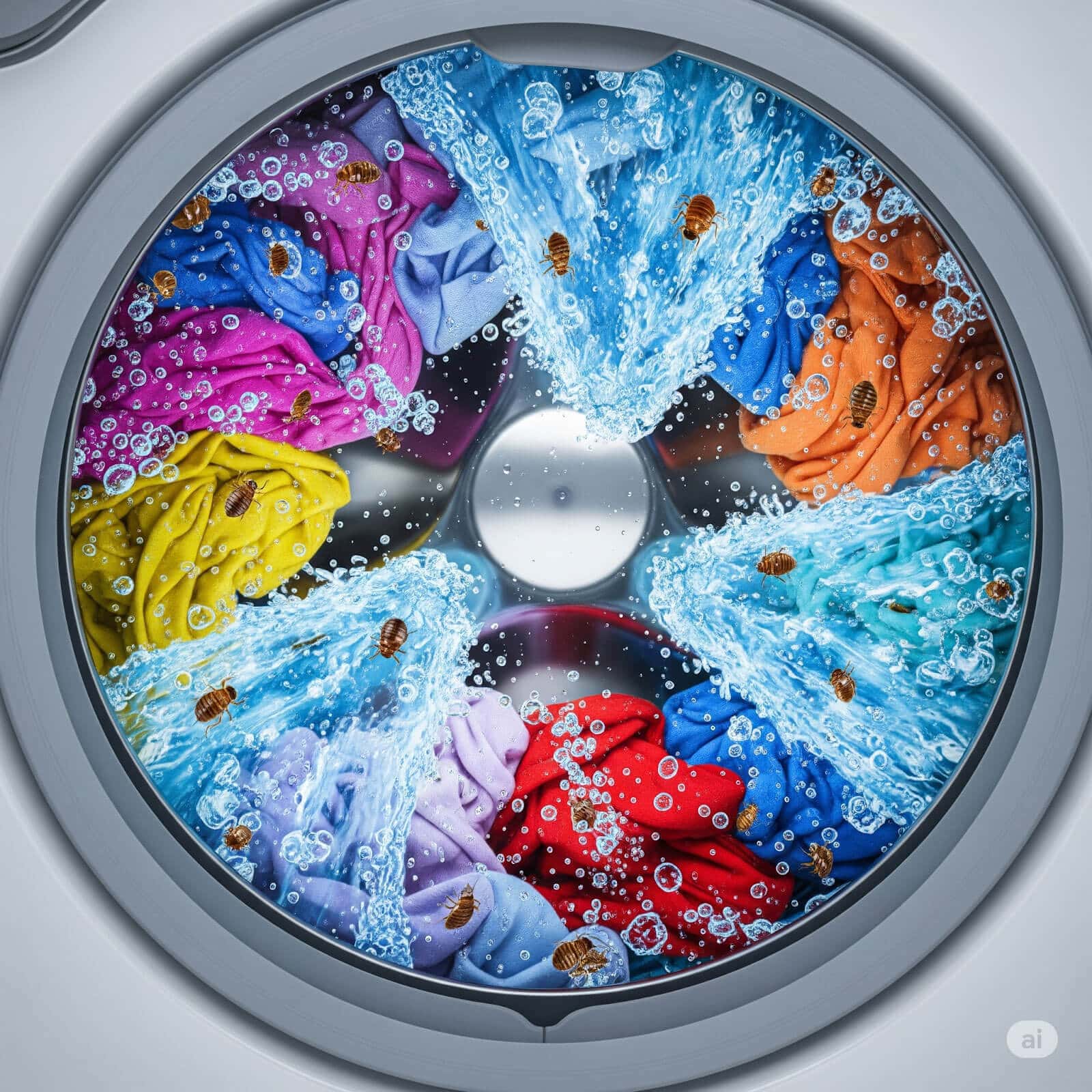
Most of the time, bed bugs find their way into homes by latching onto luggage, second-hand furniture, or clothing. Although they prefer to hide in cracks, mattresses, or furniture, they can cling to clothing long enough until they relocate to hidden areas within your home, where they can reproduce and spread.
This blog will provide helpful insight on how to remove bed bugs from clothes, covering whether washing clothes kills bed bugs or their eggs, how heat plays a role, and when it’s safe to return clothes after treatment.
Can Bed Bugs Live on Clothes?
It’s not unusual to find bed bugs on clothes, especially after visiting an infested space. While these pests rarely live in clothing permanently, garments can serve as a convenient hiding spot or means of transport, allowing bed bugs to enter your home unnoticed.
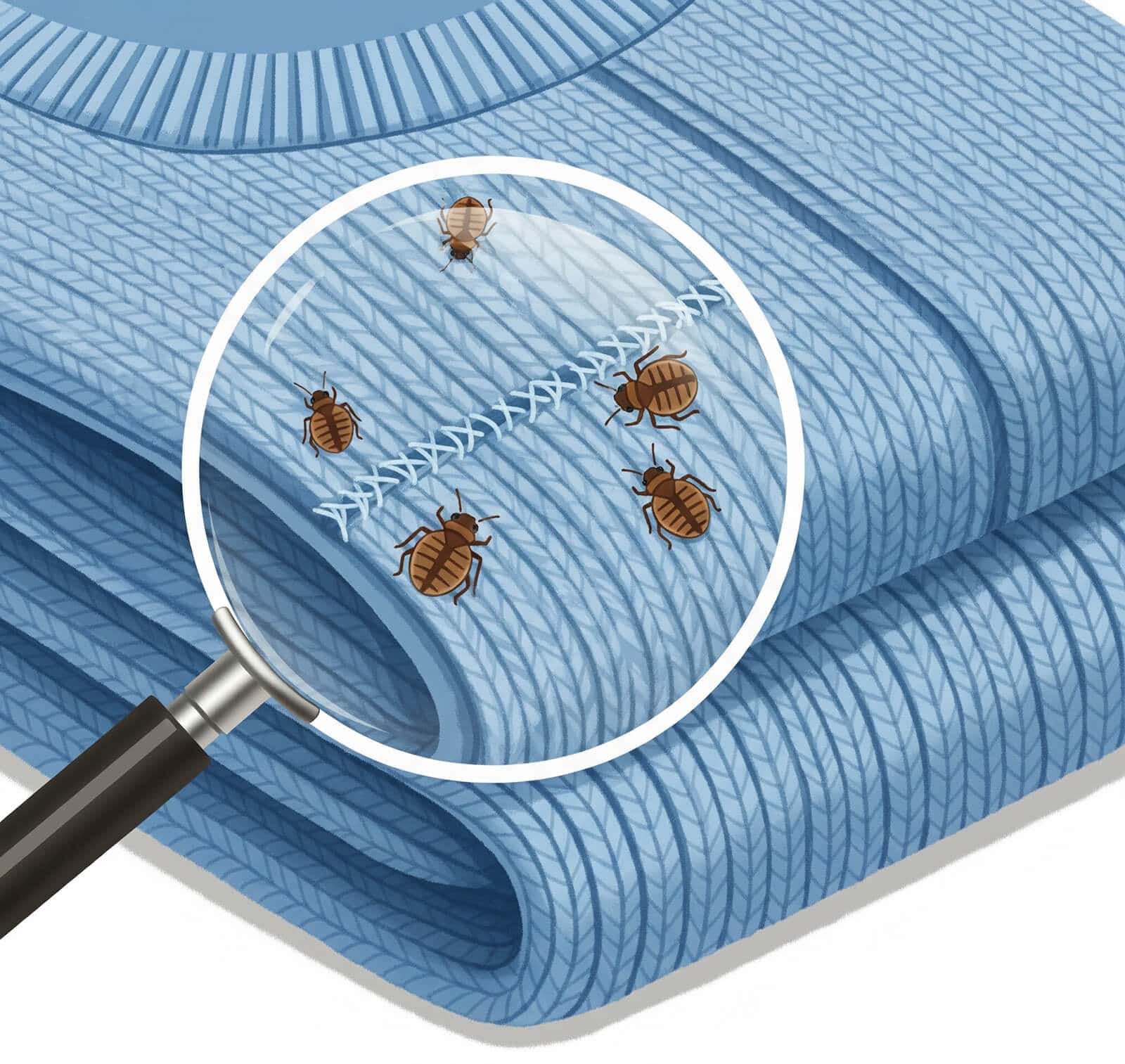
In fact, clothing is one of the most common ways bed bugs travel, especially when garments are left on hotel beds, floors, or used in shared laundry facilities. Though not their preferred habitat, clothing still plays a major role in how infestations spread.
This can be especially stressful and frustrating for homeowners who constantly clean and maintain their homes, not realizing that even freshly laundered clothes can carry bed bugs if exposed to infested environments.
How To Prevent Bed Bugs From Getting On Your Clothes
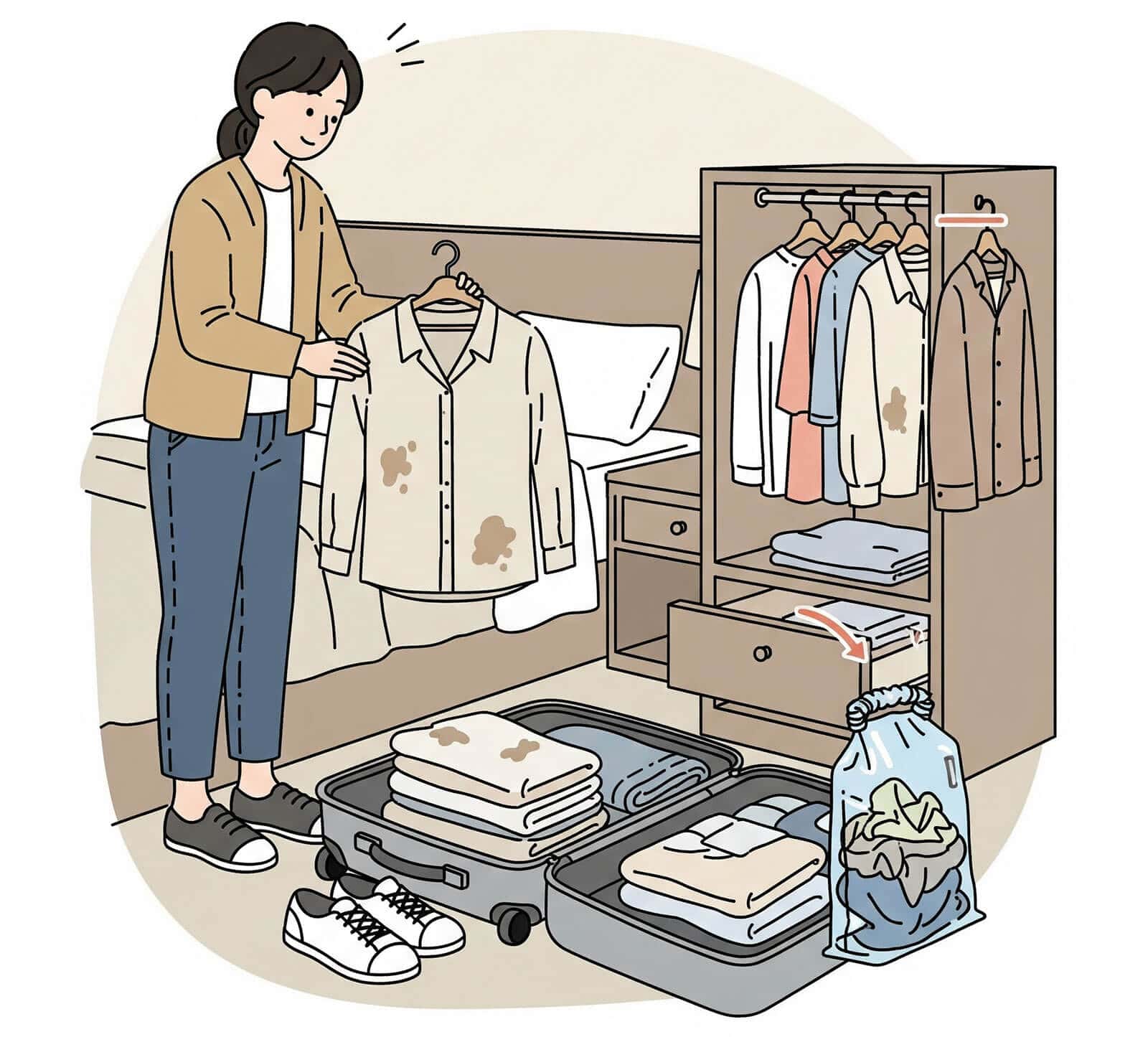
If you’re wondering how to prevent bed bugs from getting on your clothes and finding their way into your home, understanding their behaviour and how infestations spread is the key. With a few proactive steps, you can reduce the chances of unknowingly carrying them into your home:
- Inspect luggage and clothing after travel: Bed bugs often hitch a ride from hotels, public transit, or shared spaces. Check seams, zippers, and folds for any signs before bringing items indoors.
- Avoid placing clothes on hotel beds or floors: Bed bugs can hide in mattresses or carpets, making it easy for them to cling to your garments when left unattended.
- Keep dirty laundry sealed during travel: Use plastic bags to store worn clothes and prevent exposure to infested environments.
Does Washing Clothes Kill Bed Bugs or Their Eggs?
Another effective way to prevent a bed bug infestation is by washing your clothes immediately after travelling. It’s important to note that detergent alone is not enough to kill bed bugs—the secret is in combining high water temperatures with proper drying cycles. Without applying sufficient heat, bed bugs and their eggs may survive and continue to spread.
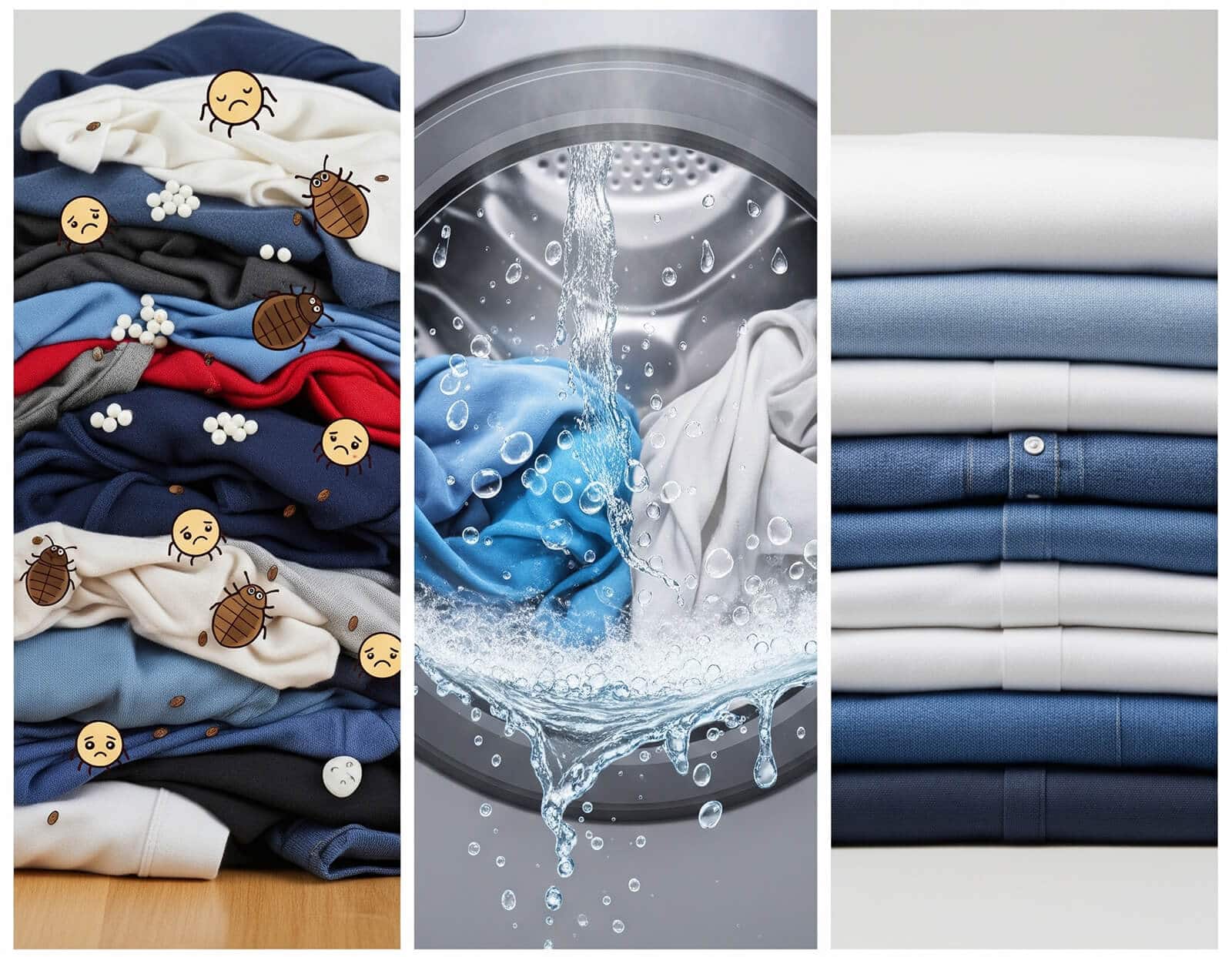
Both adult bed bugs and bed bug eggs on clothes are highly resilient. Research shows they can survive standard wash cycles if the water temperature isn’t high enough.
For reliable results, wash all exposed clothing in hot water. The heat from the dryer is often more effective than washing alone, as sustained temperatures are needed to penetrate seams and fabrics where eggs may hide.
How to Remove Bed Bugs from Clothes: Step-by-Step Laundry Guide
If you suspect that bed bugs may have latched onto your clothes, taking immediate action is essential to prevent them from spreading further. Effective removal requires a combination of high heat and careful handling to ensure no bugs or eggs survive.
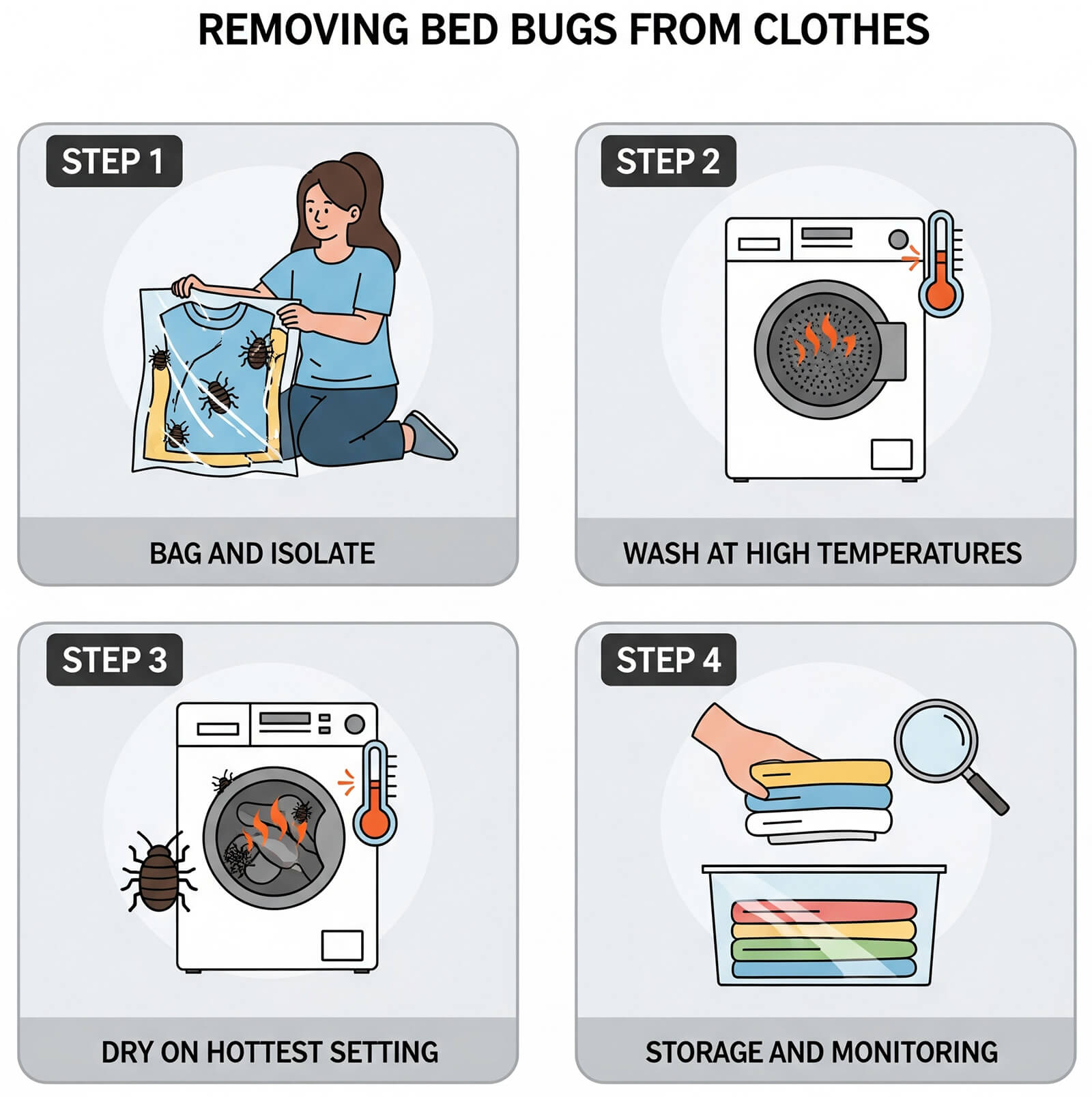
Step 1: Bag and Isolate Infested Items
One of the most effective ways to prevent bed bugs from spreading is by properly bagging and isolating your clothes. Bed bugs are skilled at hiding in seams or folds, and they can easily fall onto floors or furniture when moving laundry. Sealing clothes in plastic bags ensures the infestation stays contained until items get washed.
Step 2: Wash at High Temperatures
Heat is essential to eliminating bed bugs on clothes. When laundering exposed garments, use hot water with a temperature of at least 120°F (49°C). This level of heat is critical for killing bed bugs and their eggs during the wash cycle.
- Sturdy fabrics like cotton or denim: Use the hottest available wash setting.
- Heat-sensitive items: Avoid low-temperature washes, as they won’t be effective. Seek professional alternatives for delicate garments.
Without sufficient heat, bed bugs may survive the washing process and continue to spread.
Step 3: Dry on the Hottest Setting Possible
It’s important to know that washing your clothes doesn’t always get rid of bed bugs, especially their eggs. That’s why drying them on the hottest setting possible is a necessary step. Right after washing, place your clothes in the dryer and use the maximum heat your fabrics can safely handle. Let them dry for no less than 30 minutes.
Bed bugs and their eggs can’t survive sustained high heat, making this step one of the most effective ways to eliminate them completely.
Step 4: Storage and Ongoing Monitoring
Once your clothes have been properly washed and dried, store them in sealed plastic bags or containers to prevent re-exposure to bed bugs. This is especially important during an active infestation when pests may still be hiding in other areas of your home.
Keep your clothes sealed until you’re certain the infestation has been fully treated. Regularly inspect storage areas and clothing for signs of bed bugs on clothes to avoid re-infestation.
How Professional Bed Bug Treatment Protects Your Home
If you suspect that bed bugs may still be lingering in your home, professional treatment is the most reliable way to fully eliminate the infestation and prevent it from spreading further. DIY efforts often miss hidden areas, allowing bed bugs to spread and reproduce.
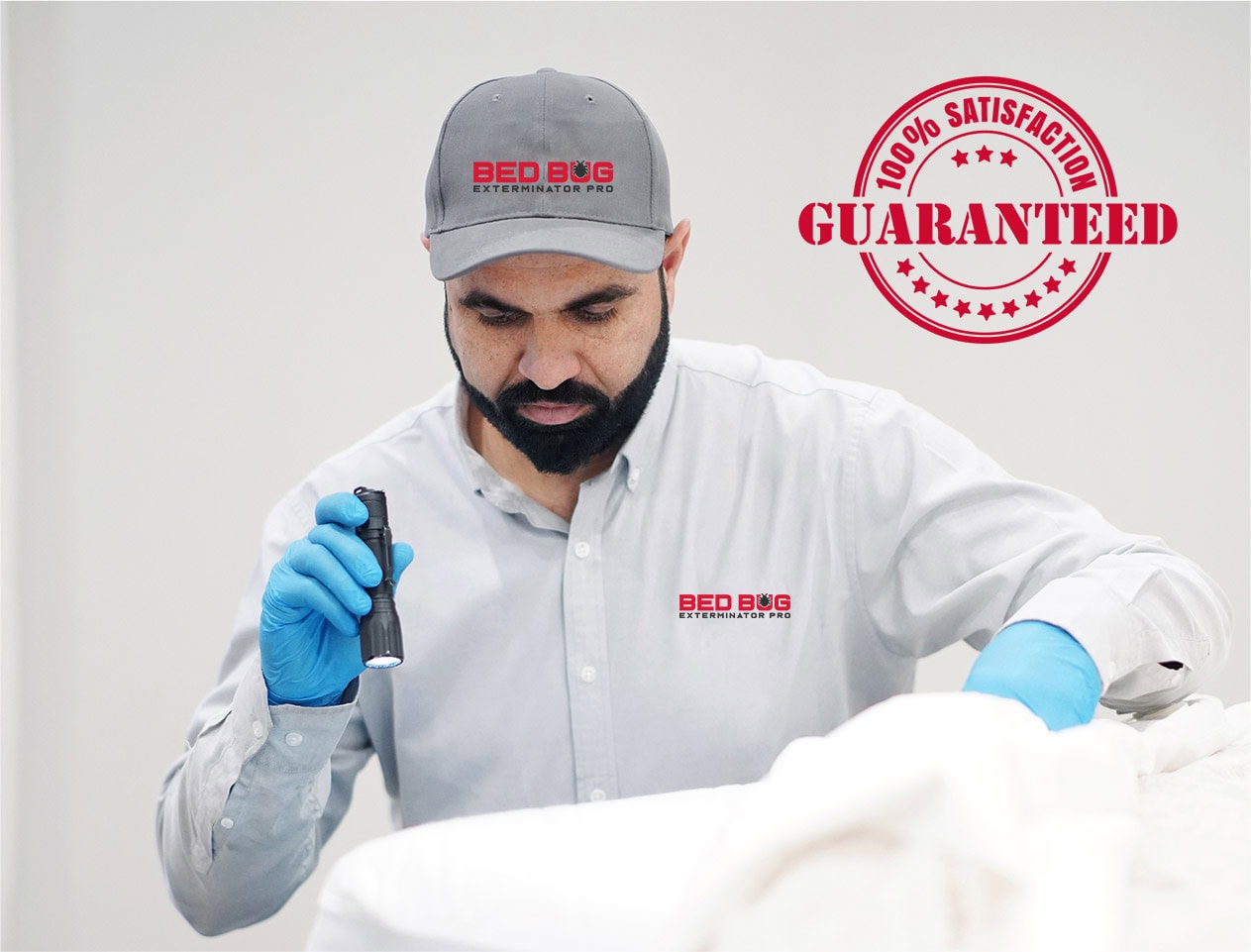
Professional exterminators like Bed Bug Exterminator Pro use specialized equipment, whether through targeted chemical treatments or high-heat solutions, to eliminate bed bugs at every stage, including resilient eggs.
At Bed Bug Exterminator Pro, we offer unmatched expertise in bed bug extermination across Toronto and the GTA. With over a decade of hands-on experience, our team focuses exclusively on eliminating bed bug infestations in both residential and commercial spaces. Our treatments are safe, environmentally responsible, and fully approved by the Ministry of Environment, Ontario.
When Can I Put Clothes Back After Bed Bug Treatment?
Knowing when to safely put your clothes back after bed bug treatment is key to preventing re-infestation. The right timing depends on the type of treatment used and the thoroughness of the process.
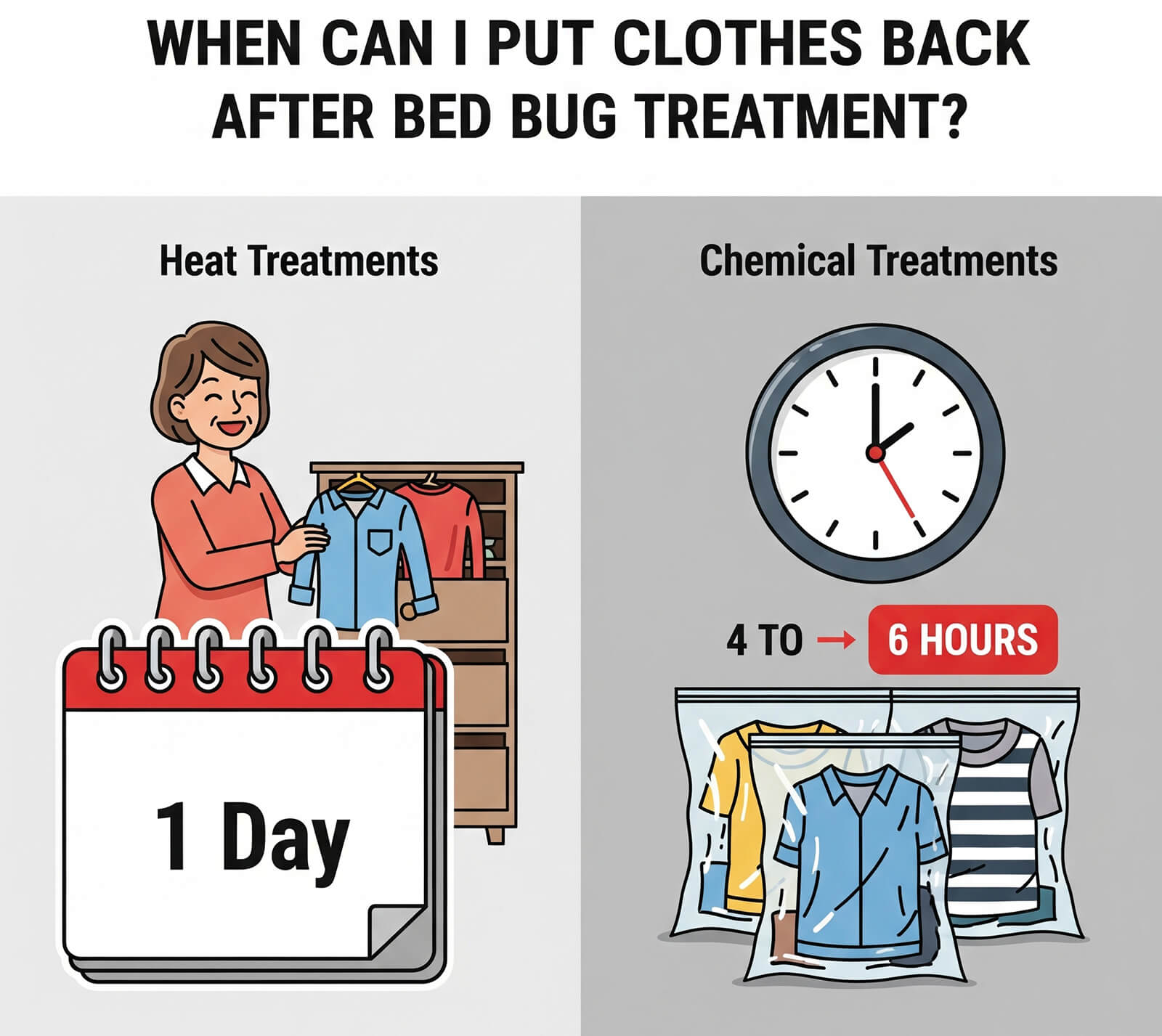
Heat Treatments: If your home was treated with high heat, you can usually return clothes to closets and drawers the same day, once the space has cooled down. Heat effectively eliminates bed bugs and their eggs, provided the entire space reached the required temperature.
Chemical Treatments: Chemical treatments require more caution. Most pest control companies recommend waiting at least 4 to 6 hours, but always follow the specific instructions provided by your exterminator. Some areas may require additional time to ensure products settle and dry completely.
To avoid re-infestation:
- Only return clothes that have been properly washed and dried on high heat.
- Store clean garments in sealed plastic bags or containers until treatment is complete.
- Inspect closets, drawers, and storage spaces for any signs of lingering bed bugs or eggs.
Taking the time to follow these steps helps ensure your home stays bed bug-free and your clothes remain protected.
Key Takeaways
Protecting your home from bed bugs requires more than just routine cleaning. Knowing how to properly handle clothing, prevent bed bugs on clothes, and manage storage after treatment plays a critical role in keeping infestations under control. High-heat laundry and careful monitoring can reduce the risk, but professional intervention is often necessary to eliminate the problem completely.
If you are still seeing signs of bed bug eggs on clothes or suspect that pests are hiding in your home, trust the experts at Bed Bug Exterminator Pro. Our team has over a decade of specialized experience, offering safe, government-approved treatments that eliminate bed bugs completely. We proudly serve Toronto and the GTA with industry-leading success rates and affordable, guaranteed services.



